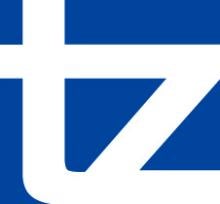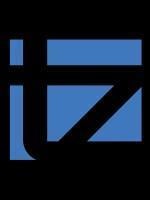The False Claims Act prohibits fraud on the government or on government-funded programs, and it allows a private citizen or company that has non-public information about such fraud to bring a lawsuit in the name of the government to recover monies owed to the government (plus additional penalties) as a result of that fraud. This type of lawsuit is called a qui tam lawsuit. The person or company that brings the lawsuit is called a “relator,” although informally they are often referred to as the “whistleblower.” In successful cases, the relator receives a monetary award between 15-30% of the amount recovered for the government, typically called the “relator’s share.” A relator can be either a person or a legal entity, such as a corporation or limited liability company.
One type of fraud covered by the False Claims Act is evasion of customs duties owed by an importer as a result of importation of goods into the United States.
In this article, I discuss my analysis of a particular category of settlements: those entered into by the United States government (the “Government”) that resulted from a lawsuit brought under the False Claims Act alleging evasion of customs duties. As we shall see, this category is small in number, but over the past dozen years has recovered more than $220 million for the Government, and resulted in more than $20 million in relator’s share payments. Such cases are a key element of the Government’s trade enforcement efforts, and are a growing share of False Claims Act litigation generally.
The statistics reported in this article are not publicly available anywhere else, and are the result of my own personal efforts in pulling together and analyzing data. I did this because, as an attorney who represents relators in qui tam cases, I am often asked questions by clients or potential clients that I was not able to answer with certainty because of the lack of available data. How frequently does the Government intervene in and settle customs qui tam cases? How much are those settlements worth? How much do the relators receive as their share? How long do such cases take? And in which courts should such cases be filed? Although each case presents unique facts and circumstances, I hope that the data I’ve compiled, and the statistics I report in this article, will be helpful in providing some evidence-based starting points for answering these types of questions.
Methodology
I identified the relevant settlements primarily through press releases. In False Claims Act lawsuits, the Government is always represented by the U.S. Department of Justice (“DOJ”), either through a group of attorneys known as the Civil Frauds Section located in DOJ’s main office in Washington, D.C., or through a local prosecutorial office, known as a U.S. Attorney’s Office. When the Government enters into a settlement of a False Claims Act lawsuit, DOJ will always make that settlement public via the issuance of a press release. Accordingly, by searching in various ways for press releases that mention both the False Claims Act and customs duties, I was able to compile a list of settlements that I believe to be fairly complete for the time-period covered.
My searches identified 43 settlements, publicly announced by DOJ over a 12-year period from August of 2011 through July of 2023. Once I identified those settlements through DOJ’s press releases, I was able to able to compile other data relating to each of those settlements. DOJ’s press releases typically identify the defendants involved in the settlement, and also often identify the underlying lawsuit by caption (meaning the title of the case, typically given in the form of “United States ex rel. [name of relator] v. [name of defendant]”). Using that information, I was able to search through the dockets of the federal courts to identify which lawsuits were involved, and to then review the files in those lawsuits to extract other information about the cases and settlements. For each of the 43 settlements I was able to extract the following data points:
-
The caption of the underlying lawsuit (including the names of the parties involved and the unique case number assigned to the lawsuit by the court);
-
The judicial district in which the case was filed;
-
The date the underlying lawsuit was filed;
-
The date on which the settlement was announced;
-
The dollar amount of the settlement;
-
The nature of the underlying customs law violation;
-
The country or countries from which the goods at issue had been exported; and
-
In most but not all cases, the amount of the award (the “relator’s share”) that was paid to the relator as a result of the settlement.
An important limitation on this data is that it captures only settlements entered into by the Government. This means that the settlements in my data set all arose from False Claims Act cases brought by a relator in which DOJ intervened or, in one case, where DOJ initiated the case on its own without a relator. The data I collected does not include settlements entered into in any case in which DOJ declined intervention, and the case was then pursued independently by the relator. In this latter category of case, the settlements are not announced publicly by DOJ, and no systematic way currently exists for identifying such settlements. Accordingly, although some such settlements have been publicly announced by the companies or law firms involved in them, I did not include those in my data or analysis because the ones that have been made public are self-selected and thus not representative.
Analysis of the data I compiled revealed the following interesting statistics.
Settlement Amounts
The 43 settlements totaled $220,219,814. The average settlement amount was $5,121,391. The median settlement amount was $1,300,000.
The average was higher than the median primarily because the three largest settlements, by dollar amount, were significantly higher than all of the others. The three largest settlements were:
-
$45,000,000 in a case that settled in 2012, United States ex rel. Dickson v. Toyo Ink Manufacturing Co., Ltd., involving evasion of duties owed under anti-dumping and countervailing duty (AD/CVD) orders relating to certain ink pigments made in China and India;
-
$22,865,055 is a case that settled in 2023, United States ex rel. Welin v. International Vitamin Corp., involving misclassification of vitamins and nutritional supplements from China; and
-
$22,200,000 is a case that settled in 2017, United States ex rel. Johnson v. Linde AG, involving evasion of duties owed under AD/CVD orders relating to certain construction materials made in China.
Of the 43 settlements, eight settled for at least $10 million, 19 settled for at least $1 million but less than $10 million, and 16 settled for less than $1 million. The smallest settlement by dollar amount was $217,832. Thus, the largest settlement was approximately 206 times larger than the smallest settlement, demonstrating how wide a range of cases the government is willing to investigate and pursue.
Relator’s Share
In 38 of the 43 cases, I was able to determine the amount of the relator’s share awarded to the relator. In those 38 cases, the government awarded a total of $20,805,000 to the relators, for an average of $547,500 per case. Measured as a percentage of the amount recovered by the government, the average relator’s share was 18%.
Not surprisingly, the largest relator’s share by dollar amount was in the case that settled for the largest dollar amount, the $45,000,000 settlement in United States ex rel. Dickson v. Toyo Ink Manufacturing Co., Ltd. In that case, the relator received an 18% share equal to $7,875,000.
By percentage, the relator’s shares ranged from one case in which the relator received 12% to one case in which the relator received a 23% share. The 12% share was awarded in U.S. rel. Rich Chiba v. Guntersville Breathables, Inc., a case that settled in 2019 for $273,495. The False Claims Act provides a presumptive relator’s share range, in intervened cases, of 15-25%. Only certain specific factors—relating to the basis for the relator’s allegation, or the relator’s involvement in the underlying wrongdoing—can take it below 15%. So, something unique about the Chiba case (although I do not know what) caused the relator’s share to drop down to 12%. It is the only case in the data where the relator’s share was below 15%.
The 23% share was awarded in United States ex rel. Hausman v. BidBuy Actions, LLC, a case that settled in early 2023 for $430,000.
Putting aside those two outliers at the low and high ends, in all of the other cases the relator’s received shares of between 15% and 21%, and in 78% of those cases the relator’s shares were between 17% and 21%.
DOJ does not generally provide any public explanation for how relator’s share was determined in particular cases. DOJ has a set of internal guidelines that, in theory, are used to guide relator’s share determinations. But those guidelines are fairly subjective, and in practice relator’s share is typically determined via a negotiation between the relator’s attorney and DOJ attorneys assigned to the case. Accordingly, based on what is publicly available, I am not able to explain why a particular relator’s share was awarded in any particular case. What can be said based on the data is that the relator’s share in an intervened case will most likely be somewhere in the 17-21% range, absent some fairly unusual case-specific circumstance that pushes the share either lower or higher.
Note that in non-intervened cases (in other words, where the Government declines to intervene, and the relator then pursues the case on their own), the False Claims Act has a higher presumptive range of 25-30% for relator’s share. For reasons previously explained, those types of cases are not included in the data that I gathered and am discussing in this piece. However, those types of cases are often pursued and settled, and in such cases the relator should expect to receive a share somewhere in that higher range.
Time Between Filing and Settlement
For all of the qui tam cases in my sample, I was able to determine the time elapsed between when the complaint was filed by the relator and when the settlement was publicly announced by DOJ. The range was between 1.5 years and 6.7 years. The average was 3.1 years, and the median was 2.8 years. Of the 42 total qui tam cases, 31 (or about 74%) settled between 2 and 5 years after filing.
The length of time between filing and settlement does not appear to correlate with any other data points. For example, the three largest dollar settlements all settled in the range of 3.2 to 3.6 years, fairly close to the average. Small dollars cases are represented at both the low end of time between filing and settlement (for example, the smallest dollar settlement took approximately 1.6 years) and at the high end (for example, a case that settled for only $325,000 but took 5.3 years).
How long it takes for the Government to investigate, and then settle, a qui tam case depends on many factors outside the control of the relator: which Government lawyers and investigators are assigned to the case, and how busy those people are with other cases; how simple or difficult it is to gather the necessary evidence; how cooperative or uncooperative the defendant is in that process. And the clearest, strongest cases can sometime take the longest because if DOJ concludes that it has evidence of intentional fraud, it may choose to open a parallel criminal case, which can cause the civil case to be put on hold for however long it takes to first resolve the criminal case. Also, larger dollar cases can sometimes take longer to settle because the defendant has more incentive to negotiate aggressively to bring the ultimate settlement amount down. In short, although the data suggests a likely range of between 2 and 5 years for most customs qui tam cases, how long any particular qui tam case will take to progress from filing to government intervention and settlement cannot accurately be predicted at the outset of the case.
Types of Customs Fraud
Customs fraud comes in many varieties, most of which are represented in the 43 settlements in my data set.
Duties are calculated as a percentage of the value of the imported goods, so perhaps not surprisingly the most common form of evasion is undervaluation. Of the 43 settlements, 18 involved undervaluation of the imported goods—frequently through “double-invoicing” schemes, whereby the importer paid for the goods through “true” invoices, but then also received a second set of “fake” invoices, showing lower prices, which were then used as the justification for the values reported to CBP on Form 7501, the “entry summaries.” Another five settlements involved failure to report “assists,” another form of undervaluation.
Evasion of tariffs imposed by anti-dumping and countervailing duty orders (AD/CVD orders) constituting the second most common issue addressed in the settlements. A total of 12 settlements involved AD/CVD violations. In 8 of the 12, the evasions took the form of misclassification of the imported goods under the Harmonized Tariff Schedule (HTS). In the other 4, the evasion took the form of transshipment of the goods in an attempt to mask the true country-of-origin.
Misclassification of goods under the HTS was the underlying issue in nine more of the settlements, although those nine cases involved allegations of evasion of normal duties rather than the typically higher duties imposed by AD/CVD orders.
Two of the settlements involved “marking duties,” which are additional 10% duties imposed on goods that are imported without proper country-of-origin marks. Another two settlements involved allegations that single sales of goods were broken into multiple shipments to bring each shipment under the minimum dutiable value, a practice the Government views as evasion.
One issue that is noticeably absent from this data set is evasion of the so-called Section 301 tariffs, which are 25% tariffs that the Trump administration imposed, and the Biden administration has continued, on a wide variety of China-origin products starting in 2018. The absence of Section 301 tariff cases from the reported settlements does not mean that no such cases have been brought, or that the Government is not interested in enforcing the Section 301 tariffs. Instead, Section 301 cases likely remain under seal and not yet publicly reported. As noted above, customs qui tam cases can take several years to get from filing to settlement, and those cases remain under seal, and out of public view, during that time. Given the wide scope of the Section 301 tariffs and (as we shall see below) the prevalence of evasion activity on products exported from China, I expect that over the next year or two we will start to see many settlements of qui tam cases alleging evasion of the Section 301 tariffs.
Country of Export
I reviewed both the DOJ press releases and the underlying complaints to determine from what country the products at issue had been exported. In 74% of the settlements (32 out of 43) the products had been exported from China to the United States. No other country was involved in more than two of the settlements, an honor shared by Vietnam and the United Kingdom.
Chinese exports not only dominated the number of settlements, but also the value of the settlements. The three largest settlements (listed above) all involved products exported from China. Of the 27 settlements of $1 million or more, 24 were from China, an 89% rate. And the settlements involving Chinese exports totaled $200,667,924, more than 91% of the total dollar value of the 43 settlements represented in my data.
What accounts for the China-centric nature of the Government’s customs-related settlements under the False Claims Act? China is certainly a major trading partner of the United States. Yet, according to various government data sources, China has accounted for only around 18-20% of imports into the United States in recent years. If customs evasion was purely a function of the volume of trade, then one would expect to see products from China involved in about 20% of customs qui tam settlements, not the 74% by number or 91% by value actually seen in my data.
I can theorize three explanations for this over-representation of Chinese products. First, perhaps duty rates are higher on Chinese products than on products from other countries, and that this leads to higher rates of evasion. This could be partially true; for example, AD/CVD orders, which impose very high duty rates, are imposed on more products from China than from any other single country. On the other hand, many of the pure undervaluation and misclassification cases in my data set also involve Chinese products, and those forms of evasion have nothing China-specific about them; rather, they are attempts to evade duties that apply equally to products by category, regardless of country of origin.
Second, perhaps the Government enforces tariffs and duties more aggressively against Chinese products than against products from other countries. I doubt this is the explanation when it comes to False Claims Act cases, since the Department of Justice, in my experience, simply takes each case on its own merits, and does not devote any more focus or effort on cases merely by virtue of where the products came from.
Third, perhaps products exported from China are more likely to be involved in evasion because of the players involved in those transactions. Although it is the U.S. importer that is typically the target of the False Claims Act case (because it is the importer that owes the duties), many, if not most, customs fraud cases involve a level of participation on the exporter side as well. For example, in undervaluation cases, fake invoices are often generated by the seller of the goods, who is typically on the exporter side of the transaction. In cases involving transshipping to mask true country-of-origin, the exporter of the goods is always involved in (and often the moving force behind) the transshipping itself. And so, perhaps Chinese exporters are more willing to engage in these types of fraudulent conduct than exporters from other countries.
Admittedly, none of these theories can be proved or disproved solely from my data.
Venue
The last item I’ll address is the venue in which the cases were filed and settled. The federal judicial system is divided into 94 districts. Each district sits within a single state, with many states containing more than one district. For example, New York has four judicial districts: the Northern District, Southern District, Eastern District, and (you guessed it!) Western District.
Each judicial district also has its own U.S. Attorney, who is the top federal prosecutor within that district, and who has a staff of Assistant U.S. Attorneys (AUSAs) who handle individual cases. Most of the U.S. Attorney’s Offices have one or more AUSAs who handle what are called “civil enforcement” cases, which are cases that are civil in nature (meaning, not criminal) and where the Government is on the plaintiff side of the case. These civil enforcement AUSAs are the ones who handle cases under the False Claims Act, including qui tam cases. Larger False Claims Act cases may also be staffed with additional attorneys from the Civil Frauds Section based out of the Department of Justice’s main offices in Washington, D.C., but even then the local AUSAs will likely be intimately involved.
Thus, when a relator decides to file a qui tam case in a particular judicial district, the relator is not only choosing a particular court, but also is choosing a particular U.S. Attorney’s Office, with its set of AUSAs, which will investigate, and potentially pursue and settle the case. This choice of venue, however, is not unbounded. According to the terms of the statute, a case alleging a violation of the False Claims Act must be filed in a judicial district where the defendant “can be found, resides, transacts business, or in which any act proscribed by [the False Claims Act] occurred.” 31 U.S.C. § 3732.
All else being equal, therefore, one would expect to see more False Claims Act cases filed, and ultimately pursued and settled, in the judicial districts where the most importation activity occurs, since this is both where the defendants are more likely to be located, and also where the unlawful activity—typically the filing of false import documentation—is more likely to occur.
According to U.S. Department of Transportation statistics, the three busiest ports in the United States, measured by number of containers moving through the port, are Los Angeles, Long Beach, and New York/New Jersey. The next busiest is Savanah, Georgia, but it only handles about half as much volume as each of the top three. See 2023 Port Performance Freight Statistics Program: Annual Report to Congress, available here. Both Los Angeles and Long Beach ports—the two busiest ports in the country by container volume—are located within the same judicial district, namely, the Central District of California. And products exported from China are more likely to arrive at West Coast ports than East Coast ports due to simple geography. So, if one were to predict in which judicial district the most customs fraud activity was likely to occur, the answer would be obvious: the Central District of California (C.D. California).
Somewhat surprisingly, however, C.D. California accounted for essentially none of the customs False Claims Act settlements in my data. I say “essentially,” because one of the settlements in my data set (a case captioned United States ex rel. Hawk v. CWD Holdings, LLC), was a single settlement that covered two different qui tam cases, one that had been filed in C.D. California and one that had been filed in the Eastern District of Michigan (E.D. Michigan). But the E.D. Michigan case was filed two years before the C.D. California case, and the press release announcing the settlement was issued by the U.S. Attorney’s Office in E.D. Michigan, factors which lead me to believe that the investigation and settlement of that case was handled primarily by attorneys in the E.D. Michigan office. Of the 43 total settlements in my data, none were the result of work done exclusively by the U.S. Attorney’s Office in C.D. California, despite that being the office with jurisdiction over the two busiest ports in the country.
What accounts for this surprising absence of C.D. California from the data I compiled? It could be some combination of enforcement priorities, available resources, or policy decisions taken within that office. Or it could just be a statistical anomaly. Nothing in the data answers this question.
Perhaps less surprising is that the busiest U.S. Attorney’s Office, in terms of customs False Claims Act settlements, has been the Southern District of New York (S.D. New York). This one office accounts for a full quarter, 11 out of 43, of the settlements. The geographic area covered by the S.D. New York includes at least portions of the New York/New Jersey port area and the U.S. Attorney’s Office in S.D. New York is known by the legal community to be one of the most aggressive and well-staffed in the country. So, whereas the absence of C.D. California from the data is surprising, the strong presence of S.D. New York is not.
Other than S.D. New York, no other venue jumps out of the data as unusually active. The other settlements are fairly evenly spread out among multiple different judicial districts around the country.





 />i
/>i

